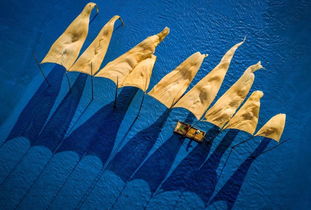Introduction: Float fishing, also known as ledger fishing, is a popular technique used by anglers worldwide to catch a wide variety of fish species. This method involves using a float or bobber to indicate when a fish bites, allowing anglers to detect subtle movements in the water. Whether you are a beginner or an experienced angler, mastering the art of float fishing requires understanding the proper techniques and tricks. In this article, we will delve into the essential techniques for achieving success in float fishing.
Choosing the Right Equipment: To start, it is crucial to select the appropriate equipment for float fishing. Here are some key factors to consider:
a. Rod: Choose a rod that is suitable for the type of fish you are targeting. A rod with a medium to fast action is ideal for float fishing.
b. Reel: A fixed spool reel is commonly used for float fishing, as it allows for smooth retrieves and easy casting.
c. Line: Use a strong and flexible monofilament line with a suitable breaking strain for the fish you are targeting.
d. Float: Select a float that is appropriate for the depth and conditions of the water you are fishing. Ensure that the float is well-balanced and has a strong stem.
e. Hooks: Choose hooks that match the size and type of bait you are using.
Setting Up the Rig: Once you have the right equipment, it is essential to set up the rig correctly. Follow these steps:
a. Attach the mainline to the reel, leaving enough length to reach the float.
b. Connect the float to the mainline using a stopper knot or a float clip.
c. Tie a swivel or a strong knot to the end of the mainline, leaving a length of line to attach the hook.
d. Attach the hook to the line, ensuring it is positioned correctly for the bait you are using.

Presenting the Bait: To attract fish and entice them to bite, it is important to present the bait effectively. Here are some tips:
a. Cast the rig out into the desired area, ensuring that the float is set at the desired depth.
b. Allow the bait to sink to the predetermined depth. The float should then be adjusted accordingly.
c. Gently twitch the bait or let it drift naturally to mimic the movement of real prey.
d. Keep an eye on the float, as even the slightest movement can indicate a fish bite.
Reading the Float: One of the key aspects of float fishing is being able to read the float accurately. Here are some tips to help you interpret the float's movements:
a. When the float starts to move, it could indicate a fish is approaching the bait. Wait for a few seconds before setting the hook.
b. If the float dips suddenly, it may mean a fish has taken the bait. Set the hook quickly and firmly.
c. A series of quick, small movements can indicate a fish is circling the bait. Maintain a gentle retrieve to entice the fish to bite.
d. If the float suddenly rises or falls, it may mean a fish has struck the line. Set the hook immediately.
Mastering the Techniques: To become proficient in float fishing, it is important to practice and refine your techniques. Here are some additional tips:
a. Experiment with different baits and rigs to find what works best for the fish you are targeting.
b. Pay attention to the water conditions, such as flow rate, depth, and clarity, as these factors can affect the fishing experience.
c. Keep your equipment in good condition, as worn-out or damaged equipment can hinder your success.
d. Learn from experienced anglers and attend workshops or fishing clinics to enhance your skills.
Conclusion: Float fishing is a rewarding and enjoyable technique that can be mastered with practice and dedication. By selecting the right equipment, setting up the rig correctly, presenting the bait effectively, and interpreting the float's movements, you can increase your chances of success. Remember to experiment, learn from your experiences, and always have fun while enjoying the beauty of nature on the water. Happy fishing!












